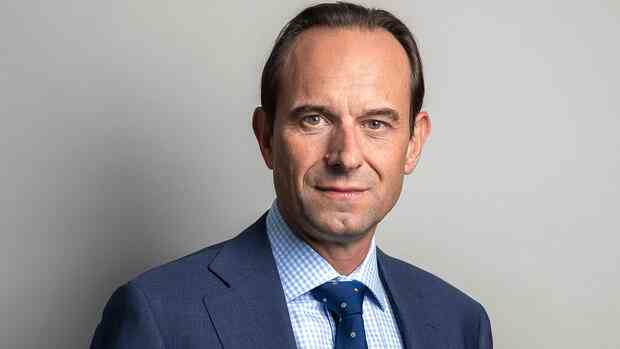The financial supervisor warns: many banks have already used up their hidden reserves and have hardly any buffer left for further valuation losses.
(Photo: Maurice Kohl)
Frankfurt According to the findings of the financial supervisory authority Bafin, the dramatic turnaround in monetary policy is affecting smaller German credit institutions and savings banks in particular. Although their interest income increases, the market value losses of their securities investments far outweigh the positive effects, at least in the short term. This emerges from the Bafin report “Risks in the focus of Bafin 2023”, which was published on Monday afternoon.
For years, smaller banks and savings banks in Germany were on average more profitable than large institutes. Those times seem to be over: According to the report, the return on assets at these institutions fell from an average of 0.23 percent to minus 0.03 percent in the first nine months of 2022. In contrast, that of the larger financial institutions supervised by the European Central Bank rose from 0.19 percent to 0.23 percent.
Normally, rising interest rates at banks ensure higher income from the lending business. According to Bafin, the interest surpluses generated by the institutes have actually increased, especially since the institutes have not yet increased the interest they pay to savers to the same extent as their lending rates.
But the rise in interest rates also means that the market value of older bonds and loans falls because they bear lower interest rates. “This puts short-term pressure on the profitability of the affected banks – especially the less important institutions,” said Bafin President Branson at the New Year’s reception of the financial regulator. European banking supervisors describe the smaller banks that are not supervised by the ECB but by national supervisors as “less significant institutions”.
Top jobs of the day
Find the best jobs now and
be notified by email.
The result: For these smaller banks and savings banks, the important cost/income ratio, which is calculated before taxes are deducted, rose from around 70 percent to 96 percent by the end of September 2022. The institutes therefore had to spend 96 cents to earn one euro. “It was a negative result after tax,” Branson warned.
On average, 2022 will be a year of losses for small banks
By the end of 2022, “almost all institutes” would have been able to absorb the losses with their valuation reserves. Only “individual banks” failed to meet their capital requirements because of the interest effects.
But the banks have now “used up most of their reserves. The first line of defense has been removed,” warned the Bafin President. If market interest rates continue to rise and these balance sheet losses continue to increase, the institutes would no longer have the reserves they have already used up as a buffer, according to the Bafin report.
>> Read here: Turnaround in interest rates increases pressure on Sparkasse Zwickau
What makes the situation even worse for many institutes: In the second half of the year, market interest rates for short-term and long-term maturities converged further, and in some cases short-term interest rates are now even higher than long-term ones. This happens in market phases in which investors expect a recession, which will force the central banks to cut interest rates again in the medium term. This torpedoes the traditional business model of many banks of lending money for longer periods of time at higher interest rates and paying lower interest rates on mostly short-term savings deposits.
“In view of this mixed situation, careful management of interest rate risks is essential – especially for the small German institutions, which are highly exposed in an international comparison. It is particularly problematic when valuation reserves have already been used up and earnings continue to come under pressure,” the financial regulators warn.
In the medium term, banks will benefit from higher interest rates. But the Bafin warned months ago that not all institutions might survive this difficult transition phase, while the rise in interest rates has more negative than positive consequences. “The Bafin currently expects that after the release of the reserves and the use of further control options, only individual banks will fall below their capital requirements at the end of 2022 due to the interest effects,” says the report.
Those institutes “that no longer have any reserves, little excess capital and larger open interest positions” are particularly at risk from the potential further rise in interest rates,” emphasized Branson. “We are currently monitoring these institutions particularly closely, especially their capital planning.”
More: Bafin bank supervisor warns: “Two-digit number of banks are getting serious problems”
